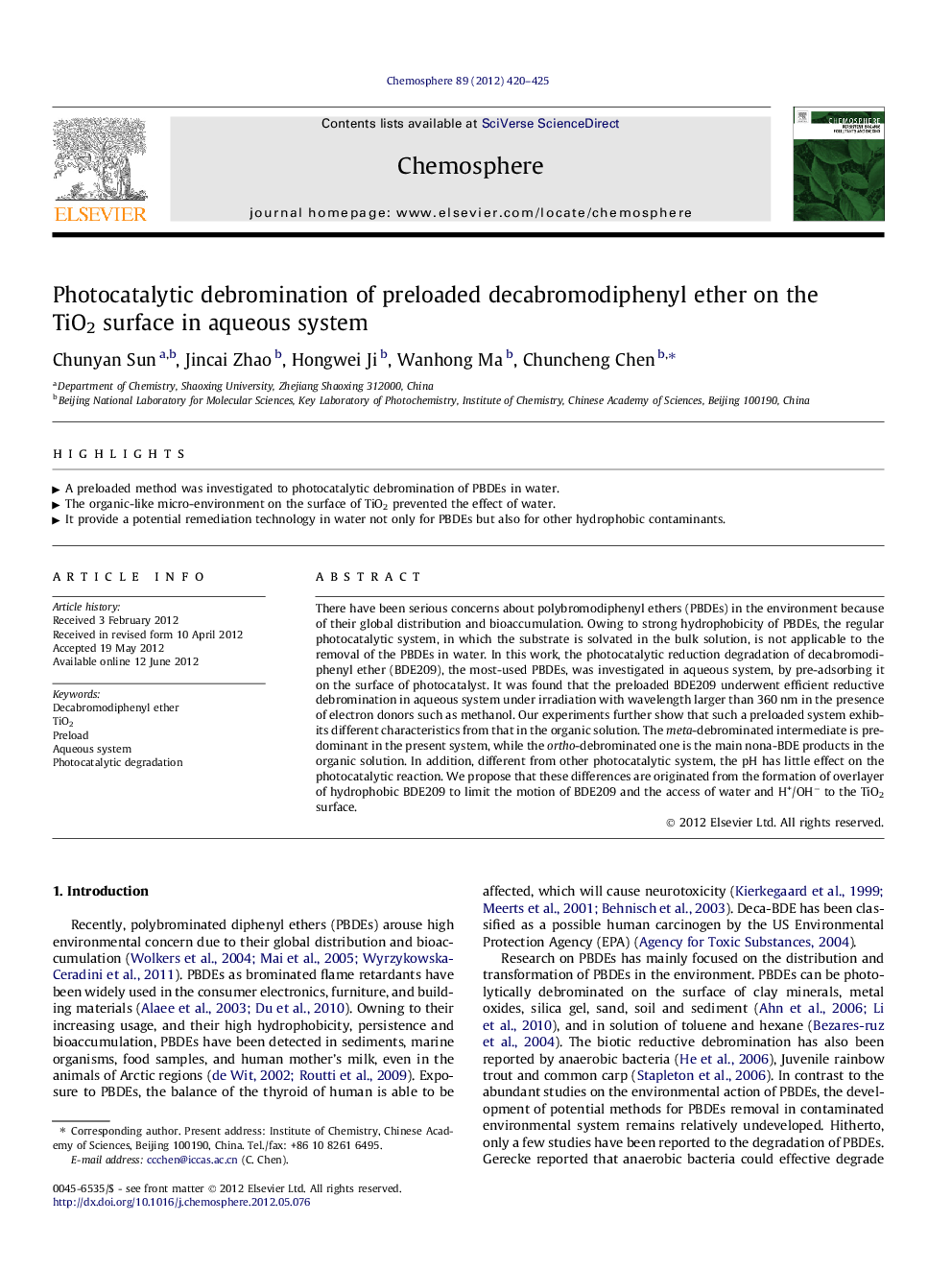| Article ID | Journal | Published Year | Pages | File Type |
|---|---|---|---|---|
| 4409605 | Chemosphere | 2012 | 6 Pages |
There have been serious concerns about polybromodiphenyl ethers (PBDEs) in the environment because of their global distribution and bioaccumulation. Owing to strong hydrophobicity of PBDEs, the regular photocatalytic system, in which the substrate is solvated in the bulk solution, is not applicable to the removal of the PBDEs in water. In this work, the photocatalytic reduction degradation of decabromodiphenyl ether (BDE209), the most-used PBDEs, was investigated in aqueous system, by pre-adsorbing it on the surface of photocatalyst. It was found that the preloaded BDE209 underwent efficient reductive debromination in aqueous system under irradiation with wavelength larger than 360 nm in the presence of electron donors such as methanol. Our experiments further show that such a preloaded system exhibits different characteristics from that in the organic solution. The meta-debrominated intermediate is predominant in the present system, while the ortho-debrominated one is the main nona-BDE products in the organic solution. In addition, different from other photocatalytic system, the pH has little effect on the photocatalytic reaction. We propose that these differences are originated from the formation of overlayer of hydrophobic BDE209 to limit the motion of BDE209 and the access of water and H+/OH− to the TiO2 surface.
► A preloaded method was investigated to photocatalytic debromination of PBDEs in water. ► The organic-like micro-environment on the surface of TiO2 prevented the effect of water. ► It provide a potential remediation technology in water not only for PBDEs but also for other hydrophobic contaminants.
